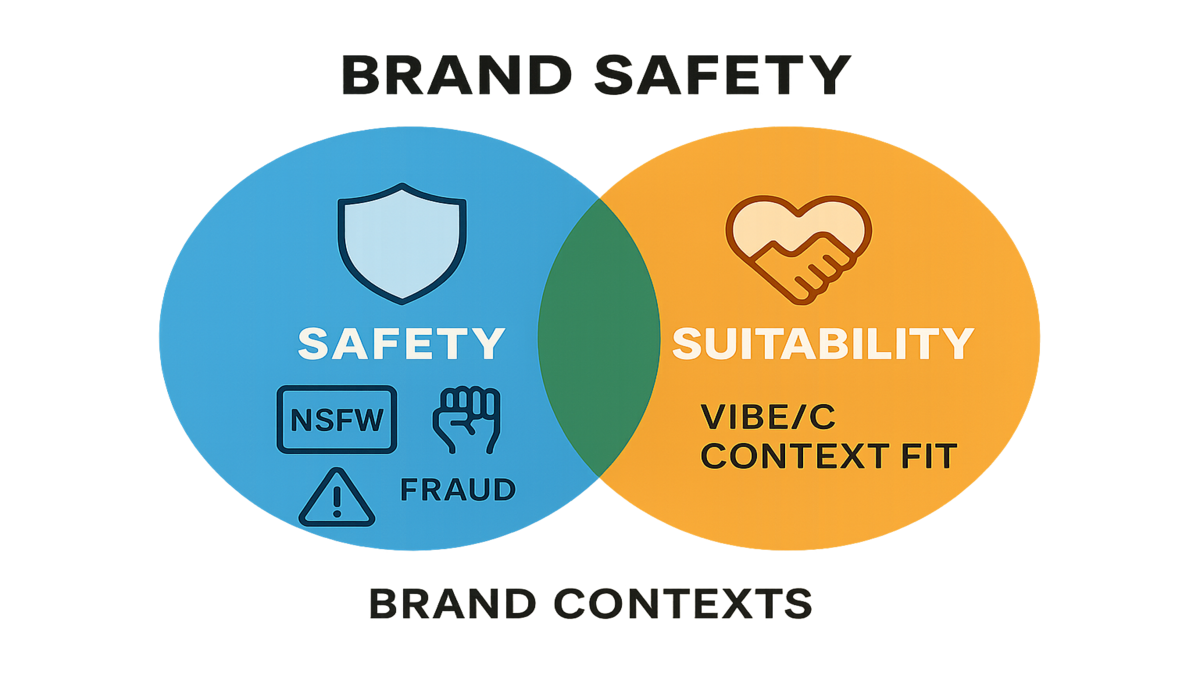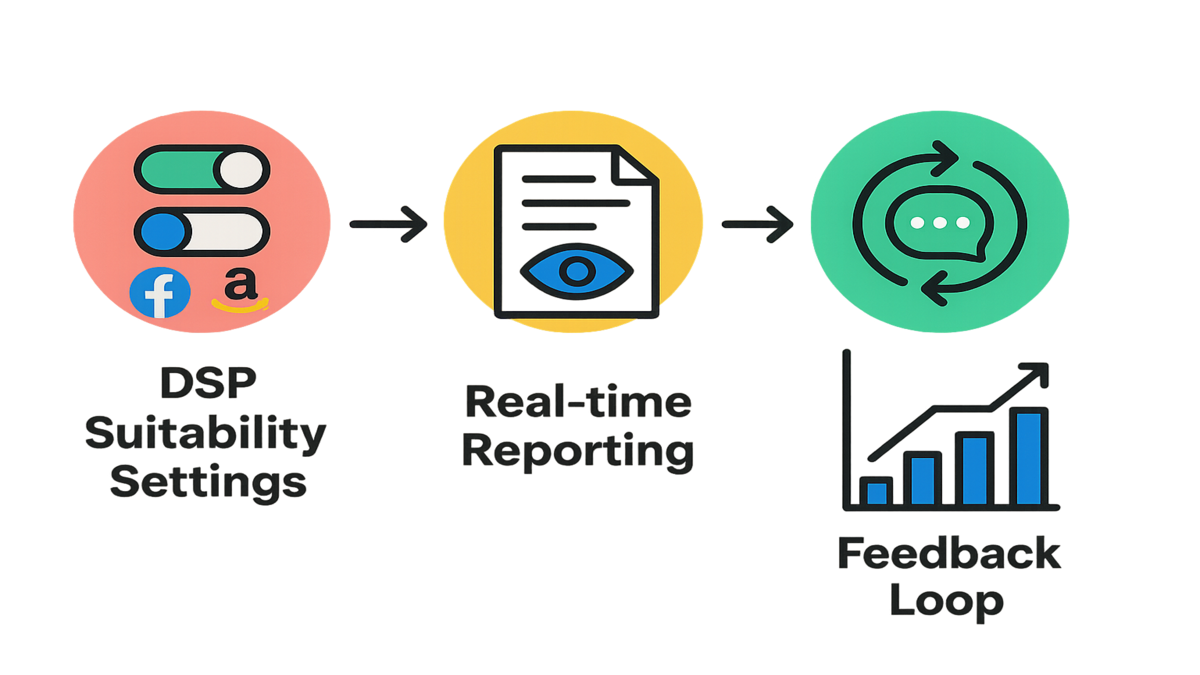
How DSP Brand Suitability Open Beta Gives You Control

Imagine this: you just dumped $50K into a new video ad campaign. You want your brand to shine and reel in fresh customers. But then you see your ad shoved between wild conspiracy theories, UFO GIFs, and flat-earther rants deep in internet chaos land. Total nightmare.
Now it's not just a weird Monday—it's a full-blown PR headache. And you do not want to explain that mess to your boss.
Welcome to the wild world of programmatic ads. Once your budget goes live, your ad can pop up anywhere. It’s like tossing a hundred paper planes out a helicopter. Some will land right where you want. Others end up in all the wrong spots (and you wish they hadn’t).
But there’s hope! Brand suitability controls have arrived—they’re now in open beta for Demand-Side Platforms (DSPs). For once, you get close to full control over where your ads show up. You don’t have to worry so much about your brand getting hit from sharing space with weird or risky content.
During this open beta, you get to be part of the team testing all the new safety nets and giving feedback. Kind of like joining a crew who’s trying out the latest spam filter, except this time, your brand (and a ton of ad dollars) is on the line. Let’s play.
TL;DR
- Granular Suitability: Control where your DSP ads go—by topic, publisher, or key words.
- Open Beta Powers: Early access, real feedback, help steer which features get released.
- Top Providers Built In: Big names like DoubleVerify and Peer39 keep your brand out of trouble (and out of digital dungeons).
- Reach and Reputation Balance: Get both strong campaigns and a safer image. No more ugly swaps.
- Real-Time Reports: See (and fix) bad ad placements as they happen.
- For Now, Twitch Inventory Only: Only works on Twitch at the moment—more sites coming soon.

Brand Suitability in DSPs
Let’s keep it real—brand safety is just the start. We all want ads to dodge viral fails, hate speech, or scary sites. That’s basic. Suitability goes next level: Is this spot not just safe, but does it actually fit your brand? Would you brag about your company logo being seen there, or cringe at first sight?
Suitability vs Safety
- Brand Safety: Blocks disasters. Stops your ad from landing next to violence, fraud, or mega-controversies.
- Brand Suitability: Filters content by vibe and context. Like Disney+ not running a trailer after a horror flick—even if that’s technically "safe".
Why is everyone suddenly obsessed? Here’s why: 70% of people lose trust in a brand if they see its ad near bad content (IAS, 2022). That’s not just a stat. That’s real customers walking away. Not great.
"With brand suitability controls, advertisers get surgical. It’s not just about protection—it’s reputation curation." – Ad Ops Manager, Major DSP
Now, your brand story, values, and ad partners finally matter as much as the ad itself.
Open Beta Settings
This open beta isn’t some soft test. If you’re in, you get extra control—right from APIs and dashboards. Instead of a boring, big filter, you get a digital mixing board to set every campaign just right.
Custom Filters
Here’s what you can do:
- Block by Category: Sick of political, violent, or just awkward content? Block it. Or don’t. Your call.
- Custom Blocklists: Add certain words or websites to your “no thanks” list anytime. Be picky, or downright ruthless.
- Pre- and Post-Bid Filters: Make rules before you spend, then review context after your ad runs. Double-check yourself.
- Verification Tools: Work with DoubleVerify, Comscore, Peer39—pick whoever matches your vibe for risk.
You can even skip all pandemic news, block sketchy sites, and scale it up in real-time. No more all-or-nothing bans or letting the weird stuff in.
Detailed Controls
Suitability is now sharp, not blunt. With beta, pick rules for your whole advertiser or break it down per ad campaign.
Want your main brand clean, but a side project to go a little wilder? Set those preferences easy with brandSafetyTierInheritedSettingDetails and brandSafetyTierTarget.
Quick Tip: For now, all these tools are only on Twitch display and video ad slots—not Sponsored Products. But Amazon plans more soon.
Beta Perks
Why join beta? You’re not just a user—you’re a maker. Here’s what you get:
- Auto-Reporting: Super detailed logs. Know exactly where your ad went. Find a mess-up? Block it—simple.
- Transparency at Scale: Get publisher-level and placement-level details. It’s picky, but that’s good!
- Shape the Rules: Your feedback changes things. Hate a feature? Spot a problem? Your comments can get it fixed (and you may get fast support during beta).
“We saw a 22% drop in bad placements after tweaking suitability filters in the Adobe DSP beta.” – Digital Marketing Lead, e-commerce brand
Real results, real data, you help steer the whole thing for everyone.
Machine Learning and Reach
Set suitability too high and you lock out too much. CPMs (cost per thousand impressions) go up, reach goes down. Set it too low, and suddenly your fancy perfume ad appears next to horror film spoilers. Oops.
Beta lets you play with suitability levels, watch how that changes reach, cost, and results, and tune it in till you nail it for your brand.

How Platforms Step Up
This isn’t just a test—it's where the big players are headed. Amazon, Adobe, Meta, and others want brands to show up in the right spots, first and best.
Adobe DSP Safety
Let’s break down how Adobe does it:
- Suitability controls on the whole account or just by campaign.
- Smart tips from machine learning (look for campaign objectives tagged “ADSP_” for AI moves).
- Filters by placement, so if a publisher messes up, you can block them right away—across the platform.
“Advertisers crave cross-platform consistency. DSP segments and machine learning give them that without endless manual updates.” — Sujata Banerjee, Senior Product Lead, Adobe Advertising
Centrally managed, auto-powered, actually useful.
Amazon DSP Tools
Amazon’s DSP tools are leveling up, big time. Twitch is just the test lab. The goal? Suitability for every Amazon-owned spot—Fire TV, Audible, 3rd parties, the lot.
Right now, you can:
- Layer loads of filters at once. Politics AND violence AND COVID? Go wild.
- Use API features like
brandSafetyTierInheritedSettingDetailsto put rules on autopilot—helpful for big agencies running tons of ads.
Fun fact: Amazon Attribution and Brand Lift tools actually show you how changing safety and suitability settings impacts conversions, not just views.
Want more help with Amazon programmatic ads? Our DSP Services bundle advanced targeting, suitability power, and analytics all together.
Meta Topic Filters
Meta is going all-in, too:
- Block whole topics in Business Manager—like politics, crime, whatever you want.
- Build huge publisher blocklists.
- See detailed placement reports for every ad. No more waiting for Twitter drama to find you out.
In this world, peace of mind—and receipts—matter a lot.
Suitability in Action
Suitability means balance, not a silver bullet. Clamp down too much, CPMs soar, ad views dip. Too loose, and your hard-won reputation slips away overnight.
Open Beta Approach
Treat it like a lab:
- Quick Feedback: Your campaign data helps DSPs tweak controls before they go wide. That’s a serious privilege.
- Performance Check: Watch your reach, frequency, cost per impression, and conversions. Suitability tweaks can sink or save your results.
- Fast Block: Spot something weird? Update your blocklist in minutes.
No two brands are alike. Test, tweak, review—keep dialling to find your just-right spot.
Suitability Gets Smarter
We’re just getting started. What’s on deck?
- Wider Rollouts: Twitch is first, but Amazon’s beta will hit Fire TV, Music, Audible, and more.
- Smarter AI: Suitability controls will soon understand context, catch new topics, and learn across channels.
- Auto Upgrades: Imagine controls that don’t just block fails—they hunt for “on-brand” sites and report back with real-time stats.
Stick close to beta programs, keep your reports sharp, and read the latest—things change fast.
Fast Takeaways
- Pinpoint Controls: Choose where your brand goes, and where it never shows up.
- Beta = Head Start: Shape the platform before others get in.
- Go Beyond Safety: Not just blocking, but building your brand’s best environment.
- Watch Performance: More rules = higher CPMs, less = more risk. Know your balance.
- Own Your Data: Dig into those reports, check often, always upgrade your settings.
- Stay Flexible: Tools change quick—stick with it and update often.
Suitability Playbook
- Review suitability on every campaign, not just the main account.
- Build and refresh blocklists (words, sites, categories—you name it).
- Test every 3rd-party partner. Pick the best for your crowd.
- Check daily reports. Block anything off at once.
- Track impact: reach, CPM, conversions. Never “set and forget.” Yesterday’s good site could be tomorrow’s bad headline.
- Loop in your DSP rep and send feedback. What you say gets stuff fixed faster than you think.
Top Asked Questions
1. Brand safety vs. suitability—what’s the difference?
Brand safety blocks the worst stuff. Suitability gets deeper, asking, "Does this fit my brand voice and style?" You pick what’s right for you.
2. Why start the beta only on Twitch?
Twitch lets DSPs try things out with real users and fix issues before rolling out everywhere. Better to test in one place first.
3. How do suitability settings in DSPs affect costs?
Tighter rules mean fewer places to show up—so CPMs may go up and reach goes down. Open beta helps you test and find your own best balance.
4. Why use 3rd-party verification partners?
They offer expert blocklists, scan for context, and react in real time—way better than guessing yourself.
5. Can I set suitability for each campaign?
Yes! Set rules for your whole brand or just one campaign. Your main ad can be strict, a special push can be chill.
6. How do I know if a placement went wrong?
Beta reporting lists every spot your ad ran. See something off? Block it for the next run. Fast and simple.
Do This Now
- Open your suitability dashboard. Don’t trust default settings!
- Build and save custom blocklists for risky sites and topics.
- Add at least one 3rd-party partner.
- Check reports daily—block or adjust if you see gaps.
- Try strict and relaxed settings to find your brand’s sweet spot.
- Give feedback! Beta managers listen—your pain points shape the next fix.
Get behind the wheel with open beta. Nail these tools, and you’ll never have to wonder why your ad’s on weird Reddit threads again.
Want to get future-proof with automation, live updates, and reports built for both safety and suitability? Peek at our Features for next-level campaign management.
Curious how Amazon reporting and brand lift tie together? See our Amazon Attribution guide. For Adobe DSP die-hards, don’t miss this DSP deep dive.

